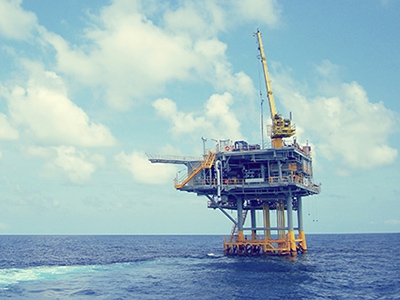The study finds that future innovation to be driven by collaboration
Lloyd’s Register Energy has released its findings from a major oil and gas survey conducted to assess the impact of innovation and investment by operators in America, Europe and Asia.
The Technology Radar survey, launched at the start of the year, takes the pulse of technical innovation in the sector and looks ahead to the future investment drivers.
| The survey revealed the investment drives to be: |
|
Lead participants in the survey include commentary from UK Onshore Operations Group, Woodside Energy, Enertech, Maersk Drilling, TouGas Oilfield Solutions, Horton Wison Deepwater, Royal Dutch Shell, GE Oil & Gas, and also Douglas-Westwood, National Energy Technology Laboratory (US), and the Institute for the Analysis of Global Security.
The Technology Radar survey is one of the largest polls on the issue of technology and innovation in the oil and gas industry. It takes in to account respondent’s opinions and their business strategies in the near term (before 2020); the medium term (the years before and after 2020); and the longer term (from 2025 and beyond).
| Technology Radar survey is based on five research questions: |
|
| Key findings of the survey: |
|
Commenting on the findings, John Wishart, Director of Lloyd’s Register Energy, said:
“This 2014 Lloyd’s Register Energy Technology Radar synthesises the oil and gas sector’s view of which technologies harbour the greatest potential beneficial impact, and when that technology is likely to go mainstream.
“Through in-depth interviews and supported by a survey of more than 250 sector professionals, we have developed a clear and illustrative overview. Given the vast range of innovation underway, this study focuses on 25 specific technologies; technologies that help extend the life of current assets, or improve uptime and efficiency, are setting the greatest prioritisation today.
“In the near term, automation and EOR are expected to have the greatest impact on the sector; in the medium term, it is high-pressure, high-temperature drilling and multi-stage hydraulic fracturing; from 2025 and beyond, subsea robotics is seen as most promising.
“This research provides evidence from which we can better understand and explain the trends which we are beginning to see across the oil and gas industry. The Technology Radar survey is one of the largest and latest independent polls on the issue of technology and innovation in the oil and gas industry.
“Through this independent survey we are sharing to a global industry the views from industry, and we believe the results will help to guide future energy policy and the development of industry growth plans. With rising energy costs, the oil and gas sector will benefit from a clearer understanding of the potential innovation scenarios to meet future energy demands and providing robust energy supply.
“Initiatives that nurture technical innovation can no longer be an afterthought for business or government; they must be central to any organisation’s strategy for sustainable growth and leadership. They are central to our growth too. Adapting that sort of thinking into what we do is going to be a very interesting part of how we move forward. We are driving the development of new concepts and technologies through collaborative R&D, and our focus is firmly on innovation — to benefit our clients and society’s future.“
The importance of technological innovation is rising as the search for new oil and gas reserves moves beyond the conventional and easily accessible. The days of sticking a drill in the ground and hoping for the best have long gone; in future, it will be increasingly important for oil and gas companies to be able to identify, adopt and integrate critical technologies, even if they are not the primary developers.
Helped by increased computer power and communication, combined with a recent expansion in global reach and investment of companies from rapid-growth markets especially NOCs the sector continues to push back the date of peak oil, meeting the growth in global energy demand even as older fields mature and dwindle. All this is aided by ever more ingenious methods of extracting oil and gas from tough new formations and locations. Indeed, despite rising demand, over one-third of respondents expect recoverable oil reserves to grow over the next two years, while just 8% expect a fall.
Nevertheless, ongoing technological development is not guaranteed. While a cando attitude pervades successful innovators, who demonstrate much greater willingness to explore new partnerships and approaches, much of the sector remains cautious. However, as both complexity and risks mount, along with rising competition, tomorrows leaders will show a greater willingness to explore new routes to innovate or risk failure.
Source: Lloyd’s Register Energy
You may download the ‘2014 Lloyd’s Register Energy Technology Radar report‘ from Lloyd’s Register website www.lr.org/technologyradar






























































